
A sewing machine is a machine used to sew fabric and materials together with thread. Sewing machines were invented during the first Industrial Revolution to decrease the amount of manual sewing work performed in clothing companies. Since the invention of the first sewing machine, generally considered to have been the work of Englishman Thomas Saint in 1790, the sewing machine has greatly improved the efficiency and productivity of the clothing industry.
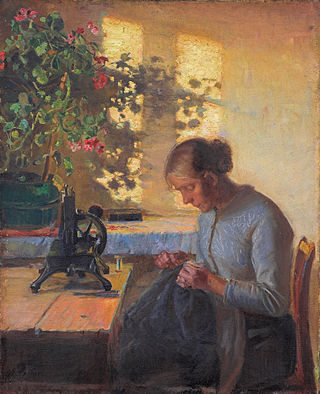
Sewing is the craft of fastening or attaching objects using stitches made with a sewing needle and thread. Sewing is one of the oldest of the textile arts, arising in the Paleolithic era. Before the invention of spinning yarn or weaving fabric, archaeologists believe Stone Age people across Europe and Asia sewed fur and leather clothing using bone, antler or ivory sewing-needles and "thread" made of various animal body parts including sinew, catgut, and veins.

Madras is a lightweight cotton fabric with typically patterned texture and tartan design, used primarily for summer clothing such as pants, shorts, lungi, dresses, and jackets. The fabric takes its name from the former name of the city of Chennai in south India.

A temple garment, also referred to as garments, the garment of the holy priesthood, or Mormon underwear, is a type of underwear worn by adherents of the Latter Day Saint movement after they have taken part in the endowment ceremony. Garments are required for any individual who previously participated in the endowment ceremony to enter a temple. The undergarments are viewed as a symbolic reminder of the covenants made in temple ceremonies and are seen as a symbolic and/or literal source of protection from the evils of the world.

A tube top, colloquially known in the UK as a boob tube, is a shoulderless, sleeveless women's garment that wraps around the upper torso. It is generally tight over the breasts, and usually uses elastic bands at its top and bottom to prevent it from falling. The tube top's precursor was a beachwear or informal summer garment worn by young girls in the 1950s that became more widely popular in the 1970s and returned to popularity in the 1990s and 2000s.
Clothing terminology comprises the names of individual garments and classes of garments, as well as the specialized vocabularies of the trades that have designed, manufactured, marketed and sold clothing over hundreds of years.
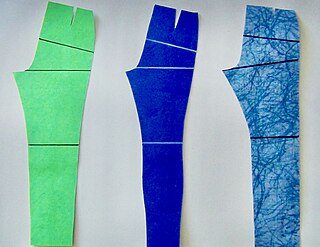
In sewing and fashion design, a pattern is the template from which the parts of a garment are traced onto woven or knitted fabrics before being cut out and assembled. Patterns are usually made of paper, and are sometimes made of sturdier materials like paperboard or cardboard if they need to be more robust to withstand repeated use. The process of making or cutting patterns is sometimes compounded to the one-word Patternmaking, but it can also be written pattern(-)making or pattern cutting.

Trim or trimming in clothing and home decorating is applied ornament, such as gimp, passementerie, ribbon, Ruffle (sewing)s, or, as a verb, to apply such ornament.
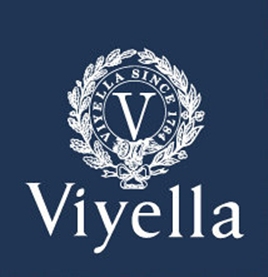
Viyella is a blend of wool and cotton first woven in 1893 in England, and the "first branded fabric in the world". It was made of 55% merino wool and 45% cotton in a twill weave, developed by James and Robert Sissons of William Hollins & Co, spinners and hosiers. The brand name, first registered as a trademark in 1894, and registered in the United States in 1907, soon covered not only the original fabric, to be sold by the yard, but also clothing. At first this was made by separate businesses, but it was not long before Hollins started producing their own clothes and offering franchises to manufacturers who would use the Viyella label. Following increasing emphasis on garment manufacture over the years, Viyella is now a fashion brand for clothes and home furnishings made of a variety of fabrics. The original wool/cotton blend is no longer sold.


Fashion design is the art of applying design, aesthetics, clothing construction and natural beauty to clothing and its accessories. It is influenced by culture and different trends, and has varied over time and place. "A fashion designer creates clothing, including dresses, suits, pants, and skirts, and accessories like shoes and handbags, for consumers. He or she can specialize in clothing, accessory, or jewelry design, or may work in more than one of these areas."

The textile and clothing industries provide a single source of growth in Bangladesh's rapidly developing economy. Exports of textiles and garments are the principal source of foreign exchange earnings. By 2002 exports of textiles, clothing, and ready-made garments (RMG) accounted for 77% of Bangladesh's total merchandise exports.

Revolution LLC is an American investment firm based in Washington, D.C., founded in 2005 by AOL co-founder Steve Case, after leaving the AOL Time Warner board. The firm seeks to fund entrepreneurs who are transforming legacy industries with innovative products and services, with an overarching focus on companies that are based outside of the coastal tech hubs of NYC, SF and Boston. Through the firm's Rise of the Rest platform, it has developed a network of business and civic relationships that helps Revolution source investments and support existing companies as they seek to expand across the country. Notable investments include LivingSocial, Zipcar, DraftKings and sweetgreen.
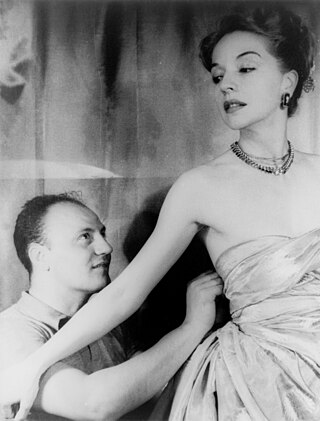
Haute couture is the creation of exclusive custom-fitted high-end fashion design. The term "Haute couture" is derived from the French language, where "haute" means "high" or "elegant," and "couture" translates to "sewing" or "dressmaking." Bodice is a composition of vesture, traditionally for women and girls, covering the torso from the neck to the waist. The term Haute Couture generally refers to a specific type of upper garment common in Europe during the 16th to the 18th century, or to the upper portion of a modern dress to distinguish it from the skirt and sleeves. Beginning in the mid-nineteenth century, Paris became the centre of a growing industry that focused on making outfits from high-quality, expensive, often unusual fabric and sewn with extreme attention to detail and finished by the most experienced and capable of sewers—often using time-consuming, hand-executed techniques. Couture translates literally from French as "dressmaking", sewing, or needlework and is also used as a common abbreviation of haute couture and can often refer to the same thing in spirit. Haute translates literally to "high".

Russell Athletic is an American clothing manufacturer based in Bowling Green, Kentucky. Currently a subsidiary of global company Fruit of the Loom, Russell Athletic was the main brand of Russell Brands, LLC. until its acquisition in 2006.
Clothing industry or garment industry summarizes the types of trade and industry along the production and value chain of clothing and garments, starting with the textile industry, embellishment using embroidery, via the fashion industry to apparel retailers up to trade with second-hand clothes and textile recycling. The producing sectors build upon a wealth of clothing technology some of which, like the loom, the cotton gin, and the sewing machine heralded industrialization not only of the previous textile manufacturing practices. Clothing industries are also known as allied industries, fashion industries, garment industries, or soft goods industries.

Twice was an online marketplace for buying and selling secondhand apparel based in San Francisco, CA. The e-commerce platform was created to make selling used goods easier and shopping used like buying new. Twice manages the selling process for the customer, such as pricing, shipping and merchandising. Twice vets each item to ensure it meets “like new” standards. The company currently buys and sells men's and women's clothing as well as women’s shoes and handbags from popular retailers and brands.
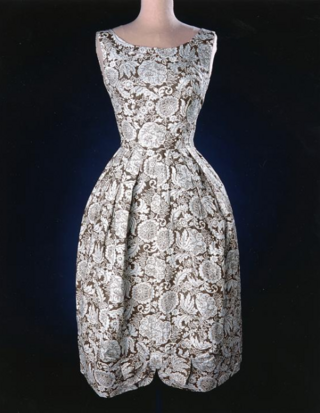
Feed sack dresses, flour sack dresses, or feedsack dresses were a common article of clothing in rural US and Canadian communities from the late 19th century through the mid 20th century. They were made at home, usually by women, using the cotton sacks in which flour, sugar, animal feed, seeds, and other commodities were packaged, shipped, and sold. They became an iconic part of rural life from the 1920s through the Great Depression, World War II, and post-World War II years.

Traditional Inuit clothing is a complex system of cold-weather garments historically made from animal hide and fur, worn by Inuit, a group of culturally related indigenous peoples inhabiting the Arctic areas of Canada, Greenland, and the United States. The basic outfit consisted of a parka, pants, mittens, inner footwear, and outer boots. The most common sources of hide were caribou, seals, and seabirds, although other animals were used when available. The production of warm, durable clothing was an essential survival skill which was passed down from women to girls, and which could take years to master. Preparation of clothing was an intensive, weeks-long process that occurred on a yearly cycle following established hunting seasons. The creation and use of skin clothing was strongly intertwined with Inuit religious beliefs.



















